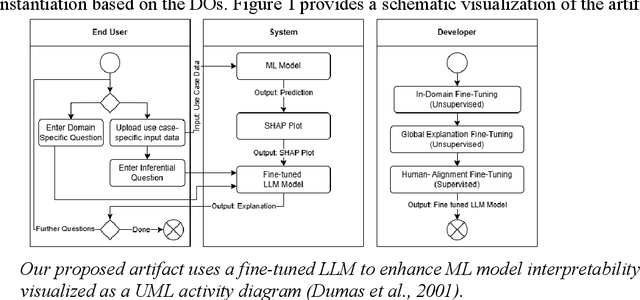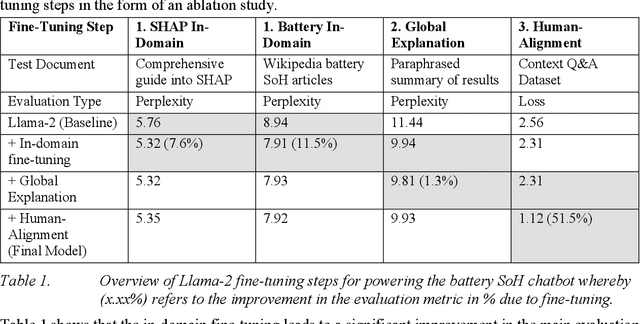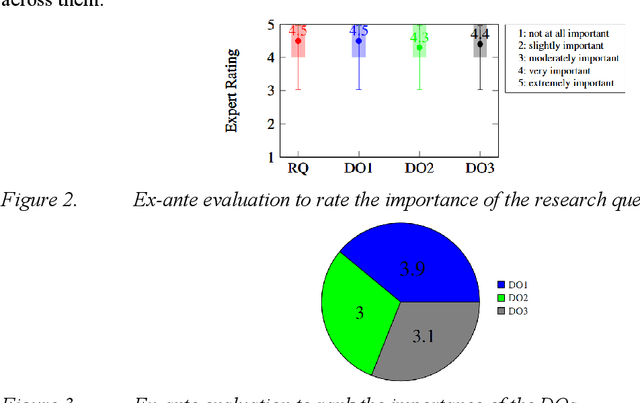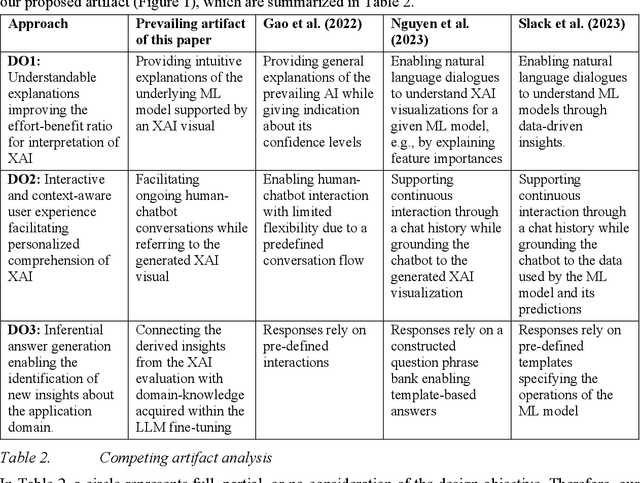chatbots
Papers and Code
A Survey on Inference Engines for Large Language Models: Perspectives on Optimization and Efficiency
May 03, 2025



Large language models (LLMs) are widely applied in chatbots, code generators, and search engines. Workloads such as chain-of-thought, complex reasoning, and agent services significantly increase the inference cost by invoking the model repeatedly. Optimization methods such as parallelism, compression, and caching have been adopted to reduce costs, but the diverse service requirements make it hard to select the right method. Recently, specialized LLM inference engines have emerged as a key component for integrating the optimization methods into service-oriented infrastructures. However, a systematic study on inference engines is still lacking. This paper provides a comprehensive evaluation of 25 open-source and commercial inference engines. We examine each inference engine in terms of ease-of-use, ease-of-deployment, general-purpose support, scalability, and suitability for throughput- and latency-aware computation. Furthermore, we explore the design goals of each inference engine by investigating the optimization techniques it supports. In addition, we assess the ecosystem maturity of open source inference engines and handle the performance and cost policy of commercial solutions. We outline future research directions that include support for complex LLM-based services, support of various hardware, and enhanced security, offering practical guidance to researchers and developers in selecting and designing optimized LLM inference engines. We also provide a public repository to continually track developments in this fast-evolving field: https://github.com/sihyeong/Awesome-LLM-Inference-Engine
Enhancing ML Model Interpretability: Leveraging Fine-Tuned Large Language Models for Better Understanding of AI
May 02, 2025



Across various sectors applications of eXplainableAI (XAI) gained momentum as the increasing black-boxedness of prevailing Machine Learning (ML) models became apparent. In parallel, Large Language Models (LLMs) significantly developed in their abilities to understand human language and complex patterns. By combining both, this paper presents a novel reference architecture for the interpretation of XAI through an interactive chatbot powered by a fine-tuned LLM. We instantiate the reference architecture in the context of State-of-Health (SoH) prediction for batteries and validate its design in multiple evaluation and demonstration rounds. The evaluation indicates that the implemented prototype enhances the human interpretability of ML, especially for users with less experience with XAI.
Emotions in the Loop: A Survey of Affective Computing for Emotional Support
May 02, 2025In a world where technology is increasingly embedded in our everyday experiences, systems that sense and respond to human emotions are elevating digital interaction. At the intersection of artificial intelligence and human-computer interaction, affective computing is emerging with innovative solutions where machines are humanized by enabling them to process and respond to user emotions. This survey paper explores recent research contributions in affective computing applications in the area of emotion recognition, sentiment analysis and personality assignment developed using approaches like large language models (LLMs), multimodal techniques, and personalized AI systems. We analyze the key contributions and innovative methodologies applied by the selected research papers by categorizing them into four domains: AI chatbot applications, multimodal input systems, mental health and therapy applications, and affective computing for safety applications. We then highlight the technological strengths as well as the research gaps and challenges related to these studies. Furthermore, the paper examines the datasets used in each study, highlighting how modality, scale, and diversity impact the development and performance of affective models. Finally, the survey outlines ethical considerations and proposes future directions to develop applications that are more safe, empathetic and practical.
A Domain-Agnostic Scalable AI Safety Ensuring Framework
Apr 30, 2025



Ensuring the safety of AI systems has recently emerged as a critical priority for real-world deployment, particularly in physical AI applications. Current approaches to AI safety typically address predefined domain-specific safety conditions, limiting their ability to generalize across contexts. We propose a novel AI safety framework that ensures AI systems comply with any user-defined constraint, with any desired probability, and across various domains. In this framework, we combine an AI component (e.g., neural network) with an optimization problem to produce responses that minimize objectives while satisfying user-defined constraints with probabilities exceeding user-defined thresholds. For credibility assessment of the AI component, we propose internal test data, a supplementary set of safety-labeled data, and a conservative testing methodology that provides statistical validity of using internal test data. We also present an approximation method of a loss function and how to compute its gradient for training. We mathematically prove that probabilistic constraint satisfaction is guaranteed under specific, mild conditions and prove a scaling law between safety and the number of internal test data. We demonstrate our framework's effectiveness through experiments in diverse domains: demand prediction for production decision, safe reinforcement learning within the SafetyGym simulator, and guarding AI chatbot outputs. Through these experiments, we demonstrate that our method guarantees safety for user-specified constraints, outperforms for up to several order of magnitudes existing methods in low safety threshold regions, and scales effectively with respect to the size of internal test data.
The Leaderboard Illusion
Apr 29, 2025Measuring progress is fundamental to the advancement of any scientific field. As benchmarks play an increasingly central role, they also grow more susceptible to distortion. Chatbot Arena has emerged as the go-to leaderboard for ranking the most capable AI systems. Yet, in this work we identify systematic issues that have resulted in a distorted playing field. We find that undisclosed private testing practices benefit a handful of providers who are able to test multiple variants before public release and retract scores if desired. We establish that the ability of these providers to choose the best score leads to biased Arena scores due to selective disclosure of performance results. At an extreme, we identify 27 private LLM variants tested by Meta in the lead-up to the Llama-4 release. We also establish that proprietary closed models are sampled at higher rates (number of battles) and have fewer models removed from the arena than open-weight and open-source alternatives. Both these policies lead to large data access asymmetries over time. Providers like Google and OpenAI have received an estimated 19.2% and 20.4% of all data on the arena, respectively. In contrast, a combined 83 open-weight models have only received an estimated 29.7% of the total data. We show that access to Chatbot Arena data yields substantial benefits; even limited additional data can result in relative performance gains of up to 112% on the arena distribution, based on our conservative estimates. Together, these dynamics result in overfitting to Arena-specific dynamics rather than general model quality. The Arena builds on the substantial efforts of both the organizers and an open community that maintains this valuable evaluation platform. We offer actionable recommendations to reform the Chatbot Arena's evaluation framework and promote fairer, more transparent benchmarking for the field
PaRT: Enhancing Proactive Social Chatbots with Personalized Real-Time Retrieval
Apr 29, 2025Social chatbots have become essential intelligent companions in daily scenarios ranging from emotional support to personal interaction. However, conventional chatbots with passive response mechanisms usually rely on users to initiate or sustain dialogues by bringing up new topics, resulting in diminished engagement and shortened dialogue duration. In this paper, we present PaRT, a novel framework enabling context-aware proactive dialogues for social chatbots through personalized real-time retrieval and generation. Specifically, PaRT first integrates user profiles and dialogue context into a large language model (LLM), which is initially prompted to refine user queries and recognize their underlying intents for the upcoming conversation. Guided by refined intents, the LLM generates personalized dialogue topics, which then serve as targeted queries to retrieve relevant passages from RedNote. Finally, we prompt LLMs with summarized passages to generate knowledge-grounded and engagement-optimized responses. Our approach has been running stably in a real-world production environment for more than 30 days, achieving a 21.77\% improvement in the average duration of dialogues.
A Framework to Assess the Persuasion Risks Large Language Model Chatbots Pose to Democratic Societies
Apr 29, 2025In recent years, significant concern has emerged regarding the potential threat that Large Language Models (LLMs) pose to democratic societies through their persuasive capabilities. We expand upon existing research by conducting two survey experiments and a real-world simulation exercise to determine whether it is more cost effective to persuade a large number of voters using LLM chatbots compared to standard political campaign practice, taking into account both the "receive" and "accept" steps in the persuasion process (Zaller 1992). These experiments improve upon previous work by assessing extended interactions between humans and LLMs (instead of using single-shot interactions) and by assessing both short- and long-run persuasive effects (rather than simply asking users to rate the persuasiveness of LLM-produced content). In two survey experiments (N = 10,417) across three distinct political domains, we find that while LLMs are about as persuasive as actual campaign ads once voters are exposed to them, political persuasion in the real-world depends on both exposure to a persuasive message and its impact conditional on exposure. Through simulations based on real-world parameters, we estimate that LLM-based persuasion costs between \$48-\$74 per persuaded voter compared to \$100 for traditional campaign methods, when accounting for the costs of exposure. However, it is currently much easier to scale traditional campaign persuasion methods than LLM-based persuasion. While LLMs do not currently appear to have substantially greater potential for large-scale political persuasion than existing non-LLM methods, this may change as LLM capabilities continue to improve and it becomes easier to scalably encourage exposure to persuasive LLMs.
Chatbot Arena Meets Nuggets: Towards Explanations and Diagnostics in the Evaluation of LLM Responses
Apr 28, 2025Battles, or side-by-side comparisons in so called arenas that elicit human preferences, have emerged as a popular approach to assessing the output quality of LLMs. Recently, this idea has been extended to retrieval-augmented generation (RAG) systems. While undoubtedly representing an advance in evaluation, battles have at least two drawbacks, particularly in the context of complex information-seeking queries: they are neither explanatory nor diagnostic. Recently, the nugget evaluation methodology has emerged as a promising approach to evaluate the quality of RAG answers. Nuggets decompose long-form LLM-generated answers into atomic facts, highlighting important pieces of information necessary in a "good" response. In this work, we apply our AutoNuggetizer framework to analyze data from roughly 7K Search Arena battles provided by LMArena in a fully automatic manner. Our results show a significant correlation between nugget scores and human preferences, showcasing promise in our approach to explainable and diagnostic system evaluations.
Sample-Efficient Language Model for Hinglish Conversational AI
Apr 27, 2025This paper presents our process for developing a sample-efficient language model for a conversational Hinglish chatbot. Hinglish, a code-mixed language that combines Hindi and English, presents a unique computational challenge due to inconsistent spelling, lack of standardization, and limited quality of conversational data. This work evaluates multiple pre-trained cross-lingual language models, including Gemma3-4B and Qwen2.5-7B, and employs fine-tuning techniques to improve performance on Hinglish conversational tasks. The proposed approach integrates synthetically generated dialogues with insights from existing Hinglish datasets to address data scarcity. Experimental results demonstrate that models with fewer parameters, when appropriately fine-tuned on high-quality code-mixed data, can achieve competitive performance for Hinglish conversation generation while maintaining computational efficiency.
AI Chatbots for Mental Health: Values and Harms from Lived Experiences of Depression
Apr 26, 2025Recent advancements in LLMs enable chatbots to interact with individuals on a range of queries, including sensitive mental health contexts. Despite uncertainties about their effectiveness and reliability, the development of LLMs in these areas is growing, potentially leading to harms. To better identify and mitigate these harms, it is critical to understand how the values of people with lived experiences relate to the harms. In this study, we developed a technology probe, a GPT-4o based chatbot called Zenny, enabling participants to engage with depression self-management scenarios informed by previous research. We used Zenny to interview 17 individuals with lived experiences of depression. Our thematic analysis revealed key values: informational support, emotional support, personalization, privacy, and crisis management. This work explores the relationship between lived experience values, potential harms, and design recommendations for mental health AI chatbots, aiming to enhance self-management support while minimizing risks.
 Add to Chrome
Add to Chrome Add to Firefox
Add to Firefox Add to Edge
Add to Edge